The Pennsylvania Railroad was an American Class I railroad that was established in 1846 and was headquartered in Philadelphia, Pennsylvania. It was so named because it was established in the Commonwealth of Pennsylvania.

The American Locomotive Company was an American manufacturer of locomotives, diesel generators, steel, and tanks that operated from 1901 to 1969.

The Baldwin Locomotive Works (BLW) was an American manufacturer of railroad locomotives from 1825 to 1951. Originally located in Philadelphia, it moved to nearby Eddystone, Pennsylvania, in the early 20th century. The company was for decades the world's largest producer of steam locomotives, but struggled to compete as demand switched to diesel locomotives. Baldwin produced the last of its 70,000-plus locomotives in 1951, before merging with the Lima-Hamilton Corporation on September 11, 1951, to form the Baldwin-Lima-Hamilton Corporation.

The Baldwin DR-12-8-1500/2 was the Baldwin Locomotive Works' first serious attempt at a production road diesel locomotive. The Baldwin type designation was 'DR-12-8-1500/2,' meaning Diesel Road locomotive, with 12 axles, and two engines of 1,500 horsepower (1,100 kW) each. The trucks were configured in a 2-D+D-2 wheel arrangement. The nickname came from the numerous axles set in a nearly unbroken line, much like the legs of a centipede.

The Pennsylvania Railroad's K4 4-6-2 "Pacific" was their premier passenger-hauling steam locomotive from 1914 through the end of steam on the PRR in 1957.
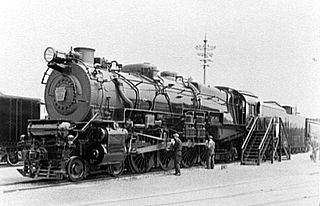
The M1 was a class of steam locomotive of the Pennsylvania Railroad (PRR). It was a class of heavy mixed-traffic locomotives of the 4-8-2 "Mountain" arrangement, which uses four pairs of driving wheels with a four-wheel guiding truck in front for stability at speed and a two-wheel trailing truck to support the large firebox needed for sustained power. Although built for both passenger and freight work, they spent most of their service lives hauling heavy high-speed freight trains. Many PRR men counted the M1 class locomotives as the best steam locomotives the railroad ever owned.

The Pennsylvania Railroad's class T1 duplex-drive 4-4-4-4 steam locomotives, introduced in 1942 and 1945-1946, were the last steam locomotives built for the PRR and arguably its most controversial. They were ambitious, technologically sophisticated, powerful, fast and distinctively streamlined by Raymond Loewy. However, they were also prone to wheelslip both when starting and at speed, complicated to maintain and expensive to run. The PRR decided in 1948 to place diesel locomotives on all express passenger trains, leaving unanswered questions as to whether the T1's flaws were solvable, especially taking into account that the two prototypes did not have the problems inherent to the production units. An article appearing in a 2008 issue of the Pennsylvania Railroad Technical and Historical Society Magazine showed that inadequate training for engineers transitioning to the T1 may have led to excessive throttle applications, resulting in driver slippage. Another root cause of wheelslip was faulty "spring equalization": The stiffnesses of the springs supporting the locomotive over the axles were not adjusted to properly equalize the wheel-to-track forces. The drivers were equalized together but not equalized with the engine truck. In the production fleet the PRR equalized the engine truck with the front engine and the trailing truck with the rear engine, which helped to solve the wheelslip problem.
The Pennsylvania Railroad's class S2 was a steam turbine locomotive designed and built in a collaborative effort by Baldwin Locomotive Works and Westinghouse Electric & Manufacturing Company, as an attempt to prolong the dominance of the steam locomotive by adapting technology that had been widely accepted in the marine industry. One was built, #6200, delivered in September 1944. The S2 was the sole example of the 6-8-6 wheel arrangement in the Whyte notation, with a six-wheel leading truck, eight driving wheels, and a six-wheel trailing truck. The S2 used a direct-drive steam turbine provided by the Westinghouse Electric & Manufacturing Company, geared to the center pair of axles with the outer two axles connected by side rods; the fixed gear ratio was 18.5:1. Such design was to prevent energy loss and S2 achieved a mechanical efficiency of 97% which means only 3% of steam energy was lost within the propulsion equipment. The disadvantage of direct-drive steam turbine was that the turbine could not operate at optimal speeds over the locomotive's entire speed range. The S2 was the largest, heaviest and fastest direct-drive turbine locomotive design ever built.
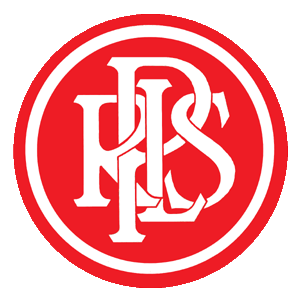
The Pennsylvania-Reading Seashore Lines was a railroad that operated in southern New Jersey in the 20th century. It was created in 1933 as a joint consolidation venture between two competing railroads in the region.

The Baldwin DR-4-4-15 was a 1,500-horsepower (1,100 kW) cab unit-type diesel locomotive built for freight service by the Baldwin Locomotive Works between November 1947 and June 1950. It was produced in two different body types, nicknamed the "Babyface" and "Sharknose" styles by railfans, though Baldwin used the same model number for both. 22 "Babyface" cab-equipped A units were built, along with 11 cabless booster B units; 36 "Sharknose" A units and 36 B units were constructed, making a total for all models of 105 locomotives built.

The PRR S1 class steam locomotive was a single experimental duplex locomotive of the Pennsylvania Railroad. It was designed to demonstrate the advantages of duplex drives espoused by Baldwin Chief Engineer Ralph P. Johnson. It was the longest and heaviest rigid frame reciprocating steam locomotive that was ever built. The streamlined Art Deco styled shell of the locomotive was designed by Raymond Loewy.

Dieselisation is the process of equipping something with a diesel engine or diesel engines. It can involve replacing an internal combustion engine powered by petrol (gasoline) fuel with an engine powered by diesel fuel, as occurred on a large scale with trucks, buses, farm tractors, and building construction machinery after the Second World War. Alternatively it can involve replacing the entire plant or vehicle with one that is diesel-powered; the term commonly describes the generational replacement between the 1930s and the 1970s of steam locomotives with diesel locomotives, and associated facilities.

Baldwin Locomotive Works produced several different Baldwin DR-6 models of 6-axle passenger train-hauling diesel locomotives between 1945 and 1948. The series comprised eight individual versions, all of which sold only in small numbers; across all versions, only 39 locomotives were produced. Each version was produced only for a single railroad. Many shared the same Baldwin model number, DR-6-4-2000, even though they were rather different; this was because the Baldwin model only encoded the total axles (6), the driven axles (4) and the power output. The single exception was the single unit produced for the Chicago and North Western Railway, which had a single 1,000 hp (750 kW) engine and was model number DR-6-2-1000. In the AAR wheel arrangement scheme of classification, these locomotives were of A1A-A1A and A1A-3 arrangements, respectively.
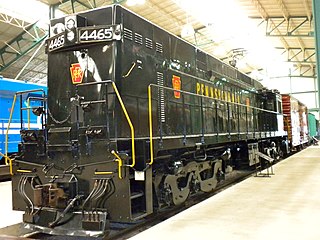
The PRR E44 was an electric, rectifier-equipped locomotive built by General Electric for the Pennsylvania Railroad between 1960 and 1963. The PRR used them for freight service on the Northeast Corridor. They continued in service under Penn Central and Conrail until Conrail abandoned its electric operations in the early 1980s. They were then acquired by Amtrak and NJ Transit, where they lived short lives; all were retired by the mid-1980s. One is preserved at the Railroad Museum of Pennsylvania.
The Pennsylvania Railroad class Q1, #6130, was a single experimental steam locomotive designed for dual service. The locomotive entered service in 1942, and retired in 1949 after accumulating a relatively low 165,000 service miles.
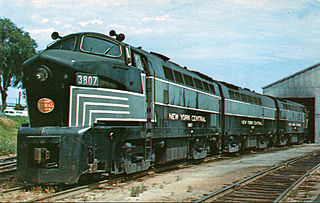
The BLH RF-16 was a 1,625-horsepower (1,212 kW) cab unit-type diesel locomotive built for freight service by the Baldwin-Lima-Hamilton Corporation between 1950 and 1953. All RF-16s were configured with a B-B wheel arrangement and ran on two AAR Type B two-axle road trucks, with all axles powered. A total of 109 cab-equipped A units were built, along with 51 cabless booster B units, for a total of 160 locomotives built. As was the case with most passenger locomotives of its day, the RF-16s came equipped with a retractable, nose-mounted drop coupler pilot. Unlike competing units from EMD and Alco, the RF-16 used an air-powered throttle, meaning that it could not be run in MU operation with EMD or Alco diesels without special MU equipment.
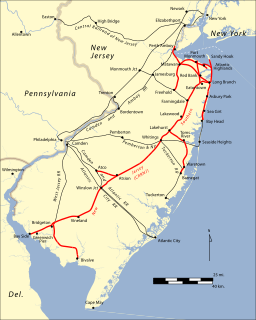
The Tuckerton Railroad was a railroad that operated in New Jersey from 1871 to 1936. The Southern New Jersey Railroad operated part of the line from 1937 to 1940.
The Pennsylvania Railroad G5s was a class of 4-6-0 steam locomotives built by the PRR's Juniata Shops in the mid-late 1920s. It was designed for passenger trains, particularly on commuter lines, and became a fixture on suburban railroads until the mid-1950s. The G5s was the largest and most powerful 4-6-0 locomotive, except for a single Southern Pacific 4-6-0 that outweighed it by 5500 lb.
Delaware and Hudson locomotives Nos 1205 and 1216 are the only surviving Baldwin Sharknoses. They have been stored out of service at the Escanaba and Lake Superior Railroad since 1981.
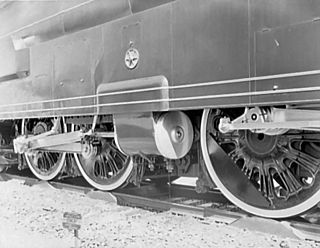
A duplex locomotive is a steam locomotive that divides the driving force on its wheels by using two pairs of cylinders rigidly mounted to a single locomotive frame; it is not an articulated locomotive. The concept was first used in France in 1863, but was particularly developed in the early 1930s by the Baldwin Locomotive Works, the largest commercial builder of steam locomotives in North America, under the supervision of its then chief engineer, Ralph P. Johnson.















